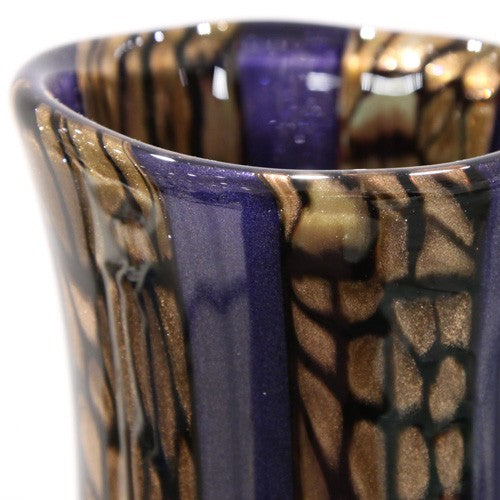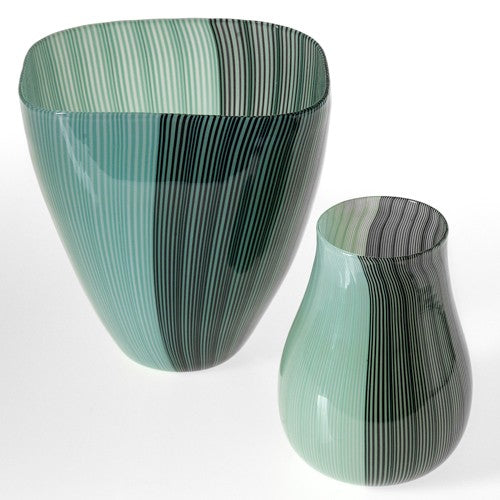A generally brownish-yellow colored glass, which over time has also been proposed in other shades (see in the picture a blue and brownish aventurine vase).
It appears translucent, in which the microcrystalline coppery metal is dispersed to reflect a golden color, formed by de-glassesification (separation from the melt during the cooling phase).
It is prepared by melting the colorless transparent glass mixture with the addition of cuprous oxide and iron and lead oxides. The fusion takes place in a reducing chamber and the melt must be cooled very slowly.
Traditionally, to get the best quality, once the mass has been melted, the oven is turned off and left to cool on its own for several days.
Once the room temperature is reached, the crucible is smashed and the aventurine is found under a layer of colored oxidized glass.
This glass found its maximum application in Murano in the mid-nineteenth century, first in the kilns of Pietro Bigaglia and then at Salviati & Co. , where it was melted again and blown to obtain extremely rich and elegant objects, often made for royal families of the day.
In the twentieth century, aventurine was used only by a limited number of glasses - works that were very difficult to obtain.
A special mention should be made here by Barovier & Toso and by Aureliano Toso who, based on drawings by the painter Dino Martens , executed a series of vases with this material decorated with applied multicolored stripes.
Related Posts:
Artistic Glass Production: Tools and Techniques
Credits:Credits to: Parole di vetro - Marsilio editore ISBN 88-317-7198-1Pictures by: Bruno Carnevali - Designs by: Alessandro Lenarda




Dejar un comentario
Todos los comentarios se revisan antes de su publicación.
Este sitio está protegido por hCaptcha y se aplican la Política de privacidad de hCaptcha y los Términos del servicio.